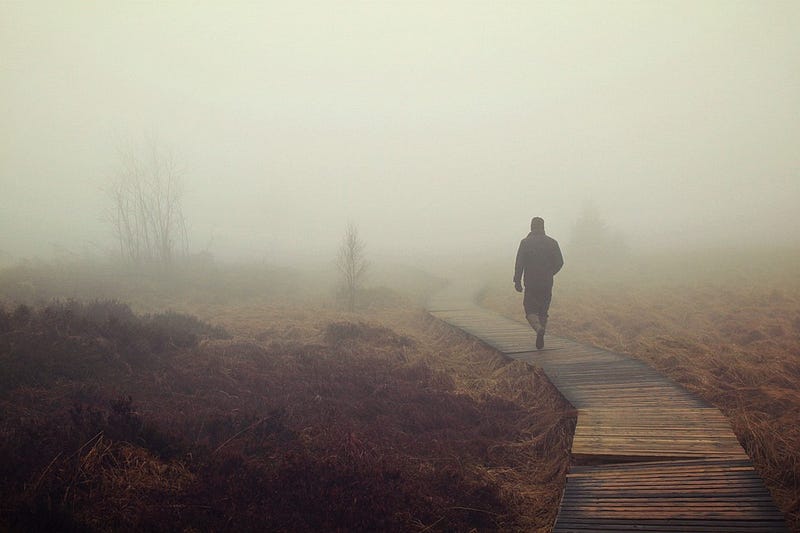The Life of an Estuarine Ecologist: An Interview with Dr. Rikke Jeppesen — Elkhorn Slough National Estuarine Research Reserve
By Lucas Principe, Environmental Science and Philosophy, 2020

This article was originally published as part of Issue 39: Synthetic.
Elkhorn Slough National Estuarine Research Reserve (ESNERR) is a 1700-acre wildlife reserve located in central California — an area where abundant estuaries once lined the coast, but are now concentrated in small, scattered pockets. ESNERR is part of the National Estuarine Research Reserve (NERR) program — an initiative funded by the National Oceanic and Atmospheric Administration to protect and monitor baseline water quality in 29 estuaries around the nation. Reserves such as these are staffed by professional scientists who work for the government instead of a university or research and development company — a conscious career choice; one that seems to be infrequently spoken of at top research universities and may be appealing to many undergraduate STEM majors. Dr. Rikke Jeppesen of ESNERR is one of these scientists. I sat down with her in January to talk about what the life of a scientist in government is really like.
Jeppesen’s official title is “Estuarine Ecologist.” Her work primarily deals with water quality, environmental monitoring, and restoration projects. She started at the Slough in 2006 while finishing her PhD in Ecology and Evolutionary Biology at the University of California, Santa Cruz.
As members of the NERR program, ESNERR scientists are required to collect data on everything from aquatic nutrient content to weather parameters. At first, this description may make the job sound tedious and invariable. However, it’s a bit hard to nail down what the daily routines are, mostly because, she says, “I don’t really have daily routines. I have weekly routines,” each one varying by day and season.
Jeppesen’s work primarily deals with water quality, environmental monitoring, and restoration projects.
For example, on Mondays Jeppesen travels to various locations within the reserve switching out field instruments. Tuesdays are usually dedicated to processing the copious amounts of data the team gathers. Wednesdays and Thursdays are filled with meetings and planning for the various research and restoration projects taking place at the reserve. And Fridays, Jeppsen says, “I kind of get to do whatever I want. As long as it’s relevant.” These days are typically spent catching up on old assignments and conducting fieldwork — particularly in the summer.
Another large part of the job involves working on separate research and restoration projects. At the moment, the biggest project the ESNERR team is working on is a restoration of over 100 acres of marshland. The team successfully worked with contractors, local scientists, and nearby stakeholders to raise the elevation of a marsh that had sunk significantly due to decades worth of draining, diking, groundwater overdraft, and other anthropogenic activity. The low-lying marsh became too inundated with brackish water to support a high level of marsh-plant diversity — a factor key to marsh health. The team’s plan was to add large amounts of sediment, increasing the elevation of the marsh plain to enable increased plant cover of the most abundant marsh-plant species — pickleweed — and to allow a broader diversity of plants to flourish.
At the moment, the biggest project the ESNERR team is working on is a restoration of over 100 acres of marshland.
Jeppesen says she thinks the ultimate goal of ESNERR is to restore the habitat in the Elkhorn Slough watershed. “In order to achieve that goal, we have to do monitoring, we have to conduct research so that we can inform our restoration efforts. We also have to work with stakeholders in the area. If we just do whatever we want without the neighbors’ input, we could get a lot of complaints and we may not get our permits.”
As one would expect, Jeppesen views working at the Slough as an incredibly rewarding career. Much of the staff scientists’ work involves the help of curious, driven volunteers from the surrounding areas to collect data across the massive reserve. “Even though they’re not scientists themselves, they want to help and they are interested and engaged and ask good questions,” says Jeppesen. “Working with people in that mindset is just fun.”
Much of the staff scientists’ work involves the help of curious, driven volunteers from the surrounding areas to collect data across the massive reserve.
Though the most fun part of the job, she contends, is solving complex ecological problems. “The thing that’s really fun is that no one is giving you a solution, you just have to figure it out. We have these very different people with these very different skill sets. If one person did it alone, maybe they could do it, but probably not. It’s fun to work as a group where we can all contribute to different things, and in the end the result is so much better than if you did it by yourself.”
She also added, “It might sound like fun to some people to jump around in the mud all day. And it is. It’s nice to be outside. It’s a lot of hard work though.”
